The bathroom is inherently a high-moisture environment. Showers, baths, and running taps release significant amounts of steam and humidity into the air. Without proper ventilation, this excess moisture can lead to a host of problems, including condensation, peeling paint, damaged fixtures, unpleasant odors, and most significantly, the growth of mold and mildew a particular concern in persistently humid climates like many parts of Indonesia. An effective bathroom ventilation system, typically centered around a quality exhaust fan, is therefore not just a desirable feature but an essential component for maintaining a healthy, comfortable, and well-preserved bathroom space. This guide explores why ventilation is crucial, the types of systems available, and key factors to consider when choosing the right one.
Why is Bathroom Ventilation Crucial?
Proper ventilation offers vital benefits:
- Moisture Control: Actively removes excess steam and humidity generated during showers and baths, preventing condensation buildup on mirrors, walls, and windows.
- Mold & Mildew Prevention: By reducing lingering dampness, ventilation drastically inhibits the growth of mold and mildew, which thrive in moist environments and can pose health risks. This is especially critical in warm, humid regions.
- Odor Removal: Quickly clears the air of unpleasant bathroom odors, keeping the space fresh.
- Improved Indoor Air Quality: Exhausts airborne pollutants from cleaning products, aerosol sprays (hairspray, air fresheners), and general stale air.
- Protecting Building Materials: Prevents long-term moisture damage to drywall, paint, wood trim, cabinetry, and even metal fixtures, extending the life of your bathroom finishes.
- Increased Comfort: Reduces stuffiness and makes the bathroom environment more pleasant.
Types of Bathroom Ventilation Fans
While opening a window provides natural ventilation (if practical and secure), mechanical ventilation via an exhaust fan is far more effective and reliable, especially for removing moisture right after use. Common types include:
- Ceiling-Mount Fans: The most popular type. Installed directly into the ceiling, these fans pull air upwards and expel it through ductwork leading outside the home (ideally through the roof or a side wall). Many models incorporate built-in lighting or even a heating element.
- Wall-Mount Fans: Installed on an exterior wall, these fans vent directly to the outside without extensive ductwork. They are a good solution for bathrooms where ceiling access is limited or running ducts is difficult, provided there’s an available exterior wall.
- Inline (Remote) Fans: With this system, the fan motor itself is located remotely – typically in the attic, crawl space, or between floors. Ductwork connects the motor to an intake grille in the bathroom ceiling and an exhaust point outside. Because the noisy motor is situated away from the bathroom, these fans offer significantly quieter operation compared to standard ceiling or wall fans with similar airflow ratings.
- Fan/Light/Heater Combos: These ceiling-mounted units integrate ventilation, primary lighting, and often a radiant heat lamp into a single fixture, offering convenience, especially in smaller bathrooms.
Key Factors When Choosing a Bathroom Fan
Selecting the right fan involves more than just picking a style:
- Airflow Capacity (CFM – Cubic Feet per Minute):This is the most critical factor. It measures how much air the fan can move per minute. An undersized fan won’t effectively remove moisture. Sizing depends on the bathroom’s area:
- General Guideline: The Home Ventilating Institute (HVI) recommends approximately 1 CFM per square foot of bathroom floor area for bathrooms up to 100 sq ft. (e.g., an 8ft x 10ft = 80 sq ft bathroom needs at least an 80 CFM fan).
- Larger Bathrooms (>100 sq ft): HVI suggests adding CFM based on fixtures (e.g., 50 CFM for each standard toilet/shower/tub; 100 CFM for whirlpool tubs).
- Enclosed Toilet/Shower Areas: May require separate, dedicated ventilation.
- Humid Climates: Consider choosing a fan with slightly higher CFM than the minimum recommendation to combat persistent humidity more effectively.
- Noise Level (Sones): This measures the perceived loudness of the fan. Lower sone ratings mean quieter operation.
- < 0.5 to 1.0 Sones: Very quiet (often described as virtually silent).
- 1.5 to 2.0 Sones: Quiet, like a soft hum.
- 3.0 to 4.0 Sones: Moderately noisy, like standard refrigerator hum.
- > 4.0 Sones: Noticeably loud.
- For comfort, aim for 2.0 sones or less, especially with inline fans which can achieve very low ratings.
- Features & Controls: Modern fans offer helpful features:
- Humidity Sensor: Highly Recommended Trend. Automatically activates the fan when humidity levels rise above a set point (e.g., during/after a shower) and turns it off once humidity drops, ensuring effective moisture removal without relying on manual operation.
- Motion Sensor: Activates the fan (and often light) when someone enters the room.
- Timer Switch: Allows the fan to continue running for a preset duration (e.g., 15-30 minutes) after the user leaves, ensuring residual moisture is cleared. Often combined with humidity sensors.
- Variable Speed: Allows adjustment of fan speed and noise level.
- Integrated LED Lighting: Provides energy-efficient illumination. Check lumen output (brightness) and color temperature.
- Ducting (for Vented Fans):
- Vent to the OUTSIDE: Absolutely crucial. Never vent moist bathroom air into an attic, crawl space, or wall cavity, as this promotes mold growth and structural damage.
- Proper Size & Path: Use smooth, rigid ducting appropriately sized for the fan’s outlet (usually 4″ or 6″ diameter). Keep duct runs as short and straight as possible with minimal bends to maximize airflow. Insulate ducts passing through unconditioned spaces.
- Energy Efficiency: Look for Energy Star certified models, which use significantly less energy than standard models.
- Aesthetics: Choose a grille design that complements your bathroom’s style (low-profile, decorative, paintable, etc.).
Installation and Maintenance
- Installation: Proper installation, including secure mounting, correct electrical wiring, and appropriate ducting/venting, is key to performance and safety. Professional installation by a qualified electrician or HVAC technician is often recommended. Ensure the fan housing is well-sealed to prevent air leakage.
- Maintenance: Regularly clean the fan grille/cover (usually snaps or screws off) to remove dust and debris, which can impede airflow. If accessible, gently vacuum the fan blades and motor housing periodically.
Conclusion
Effective bathroom ventilation is non-negotiable for protecting your home from moisture damage, preventing mold and mildew growth (especially in humid climates), eliminating odors, and maintaining healthy indoor air quality. Choosing the right exhaust fan – considering the correct CFM for your room size, a quiet Sone rating for comfort, and beneficial features like a humidity sensor – is essential. Crucially, ensure the fan is properly ducted to exhaust stale, moist air directly outside your home. A well-ventilated bathroom is a healthier, more comfortable, and longer-lasting space.

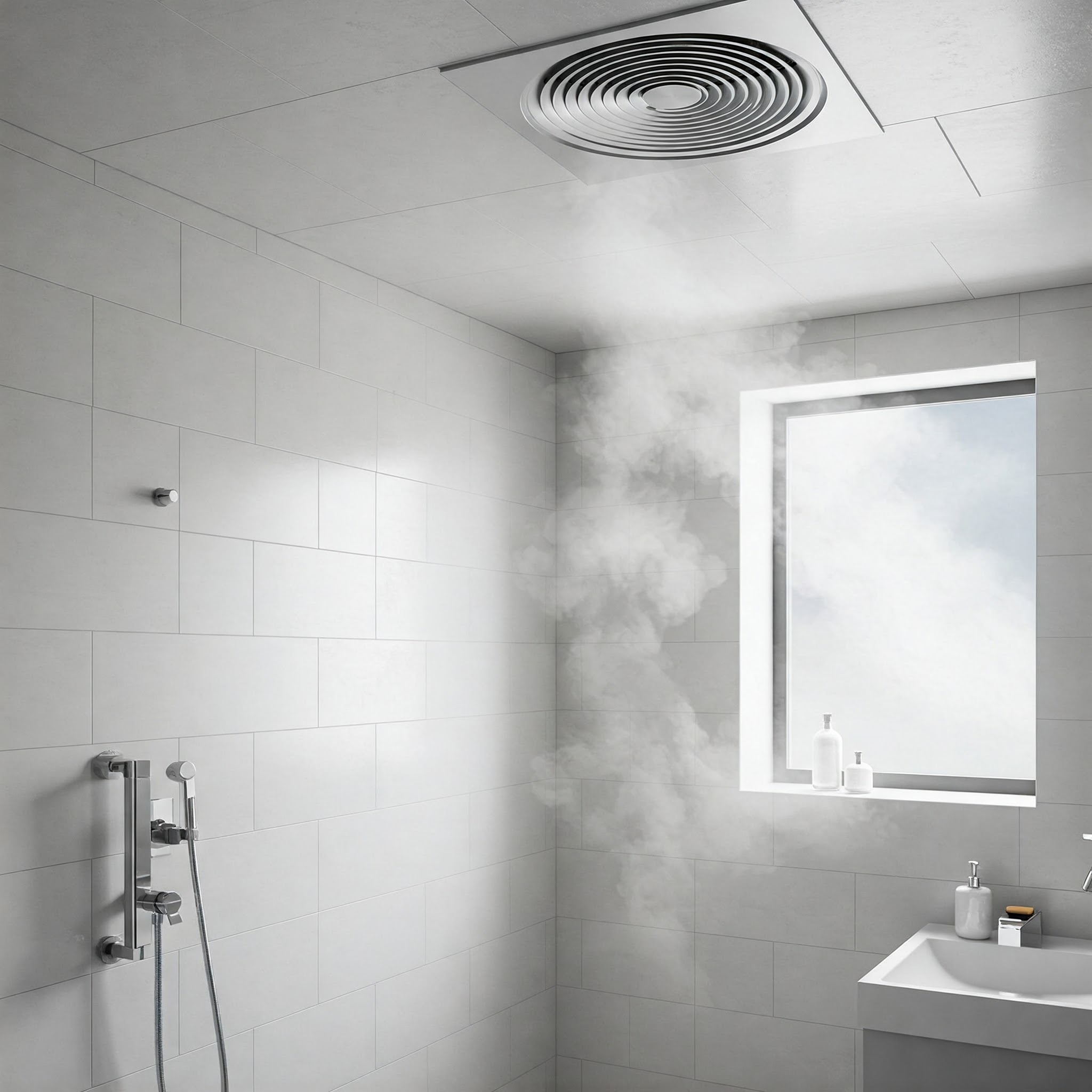
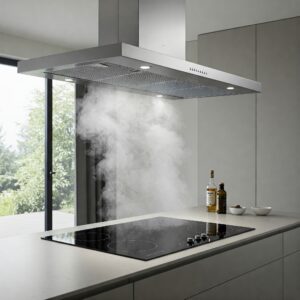
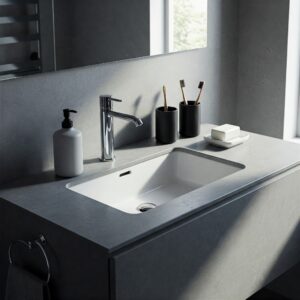

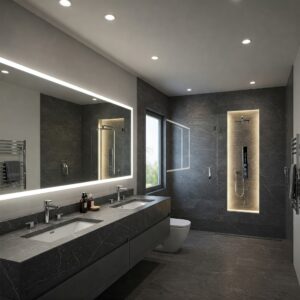
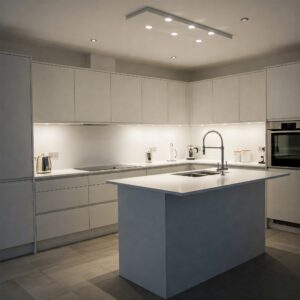
Leave a Comment